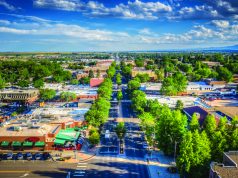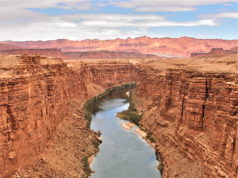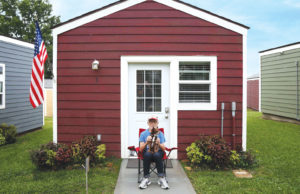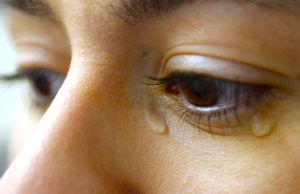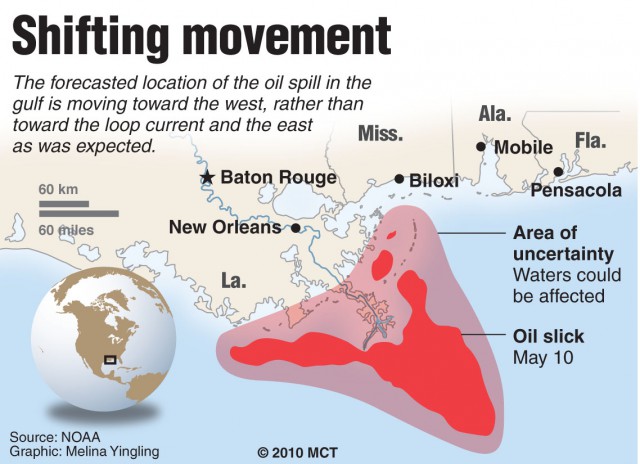
Southeast winds were slowly pushing the oil toward
Authorities mounted a defense of coastal wetlands from both the air and sea as oil drifted within five miles of shore.
“Sandbags are getting filled, and we’ll be airlifting them,” said
Booms were loaded aboard shrimping vessels and sent to string floating barriers along the fragile islands offshore.
Helicopters were poised to dump sandbags on beaches,
trapping whatever splashed ashore before it could foul the fragile
wetlands that have yet to recover from Hurricane Katrina in 2005.
Preparations continue as oil giant BP works to try
and stem the leaking well spewing oil a mile below the surface. Experts
appear to have no certain plan for sealing anytime soon the runaway
well 5,000 feet below the Gulf’s surface.
“There’s a lot of techniques available to us. The
challenge with all of them is, as you said, they haven’t been done in
5,000 feet of water,”
With what had been thought to be the best immediate
solution to contain the leak, a 78-ton steel and concrete box known as
a cofferdam, resting useless on the sea floor, BP said the next best
way to contain the oil could be in the form of a smaller containment
dome.
The “top hat” was originally supposed to be part of the 78-ton containment dome.
It is on shore being modified and could be lowered over the leak sometime midweek, said
The larger dome failed when ice-like crystals,
called hydrates, formed in the top, clogging the dome and making it too
buoyant to form an effective seal.
The smaller dome would be connected to a ship, so
hot water could be pumped down as the dome is being placed to limit the
formation of the hydrates.
On Sunday, a top
suggested that experts might try to cork one of the two existing leaks
by stuffing shredded tires, golf balls and other debris into the well’s
failed blowout preventer. That option, called a “junk shot” is another
option being considered by BP.
Executives of BP, the leaking well’s owner, said
earlier that such a move could make things worse by damaging whatever
part of the blowout preventer was still working.
“I have every confidence we’ll find a good temporary
solution,” Proegler said. “We certainly have every hope and prayer that
we find a solution as soon as possible to mitigate the oil flow.”
Eleven people died in the
In the weeks since, drifting oil has spurred frenzied preparations from
Those preparations continued apace on Monday, as forecasts from the
As it inches closer, the slick is being watched in southern
with the attention usually reserved for an approaching hurricane,
though the oil is a calamity in slow-motion, threatening environmental
hazards and economic pain that could last for years.
Already, some of the richest fishing grounds of the
Gulf are off-limits, idling thousands of commercial fishermen. On the
other end of the supply line, some restaurants in the gourmet districts
of
If oil fouls marshland, extracting it would be a monumental task, likely doomed to only limited effectiveness.
Traces of oil have already been found in offshore island ramparts like
States of emergency have been declared in coastal parishes and the
Hundreds of miles away in
at a morning briefing, local and state officials said they are bracing
for oil to come ashore — but hope it can be stopped before it hits the
state.
“Let’s hope they can cut it off,” Sen.
The key question on politicians’ minds: When will the spill reach
That’s difficult to predict, said
Currently, the spill is more than 100 miles from the “loop current” which gets its name from the fact that it loops around the
Any major changes in wind or weather patterns such
as a cold front or a hurricane could change that prediction,
Kamenkovich said.
“It’s highly unpredictable,” he said.
———
(c) 2010, The Miami Herald.
Visit
Distributed by McClatchy-Tribune Information Services.


